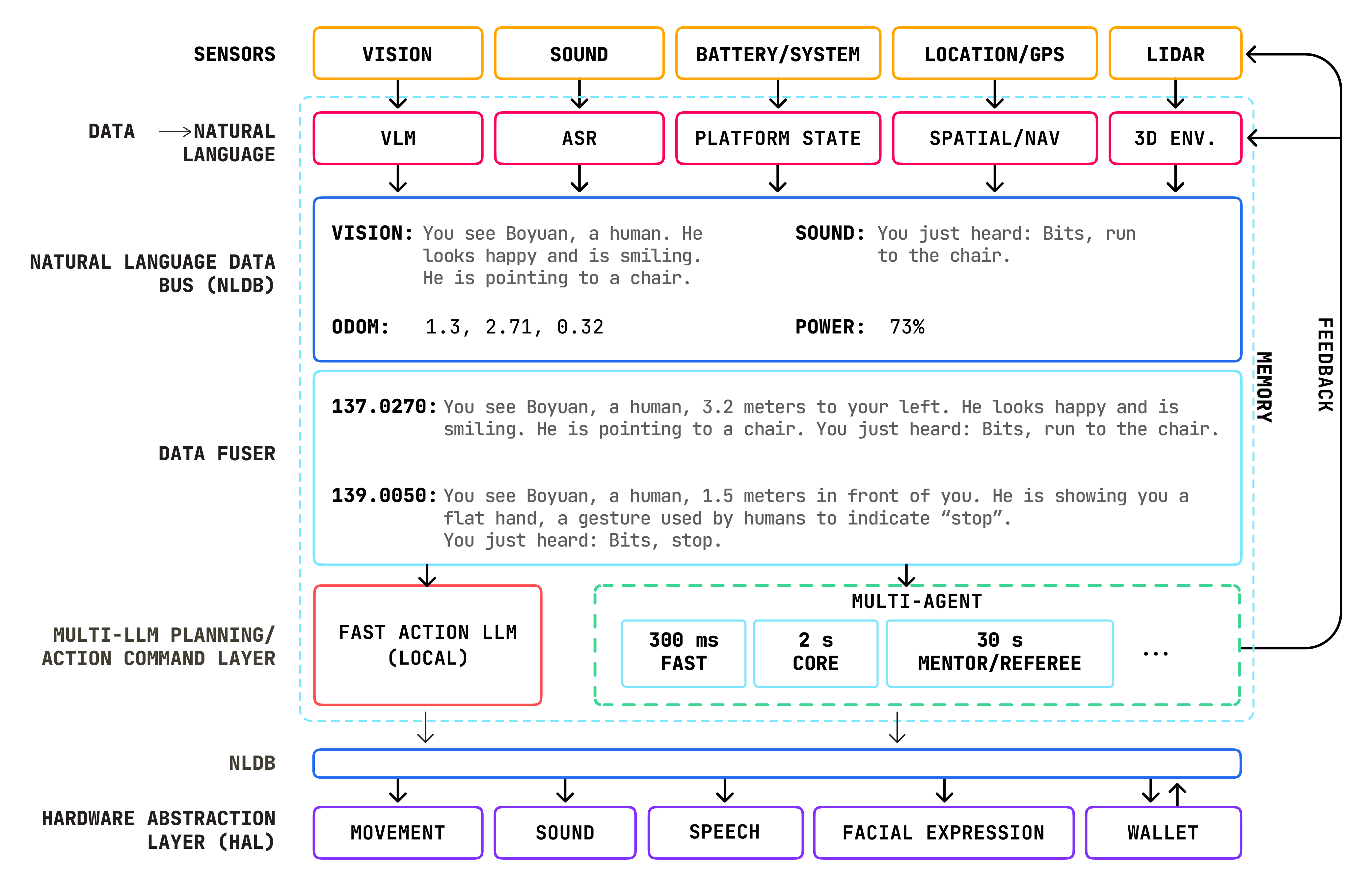Architecture Overview
This system diagram illustrates some of OM1’s layers and modules.
Raw Sensor Layer
The sensors provide raw inputs:- Vision: Cameras for visual perception.
- Sound: Microphones capturing audio data.
- Battery/System: Monitoring battery and system health.
- Location/GPS: Positioning information.
- LIDAR: Laser-based sensing for 3D mapping and navigation.
AI Captioning and Compression Layer
These models convert raw sensor data into meaningful descriptions:- VLM (Vision Language Model): Converts visual data to natural language descriptions (e.g., human activities, object interactions).
- ASR (Automatic Speech Recognition): Converts audio data into text.
- Platform State: Describes internal system status (e.g battery percentage, odometry readings).
- Spatial/NAV: Processes location and navigation data.
- 3D environments: Interprets 3D environmental data from sensors like LIDAR.
Natural Language Data Bus (NLDB)
A centralized bus that collects and manages natural language data generated from various captioning/compression modules, ensuring structured data flow between components. Example messages might include:State Fuser
This module combines short inputs from the NLDB into one paragraph, providing context and situational awareness to subsequent decision-making modules. It fuses spatial data (e.g. the number and relative location of proximal humans and robots), audio commands, and visual cues into a unified, compact, description of the robot’s current world. Example fuser output:Multi AI Planning/Decision Layer
Uses fused data to make decisions through one or more AI models. A typical multi-agent endpoint wraps three of more LLMs:- Fast Action LLM (Local or Cloud): A small LLM that quickly processes immediate or time-critical actions without significant latency. Expected token response time - 300 ms.
- Cognition (“Core”) LLM (Cloud): Cloud-based LLM for complex reasoning, long-term planning, and high-level cognitive tasks, leveraging more computational resources. Expected token response time - 2 s.
- Mentor/Coach LLM (Cloud): Cloud-based LLM for 3rd person view critique of the robot-human interaction. Generates full critique every 30 seconds and provides it to the Core LLM.
- Adjustments based on performance metrics or environmental conditions (e.g., adjusting vision frame rates for efficiency).
Hardware Abstraction Layer (HAL)
This layer translates high-level AI decisions into actionable commands for robot hardware. It’s responsible for converting a high level decision such as “pick up the red apple with your left hand” into the succession of gripper arm servo commands that results in the apple being picked up. Typicalaction modules handle:
- Move: Controls robot movement.
- Sound: Generates auditory signals.
- Speech: Handles synthesized voice outputs.
- Wallet: Digital wallet for economic transactions or cryptographic operations for identity verification.